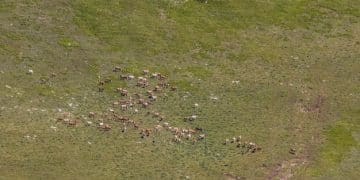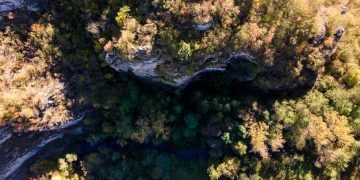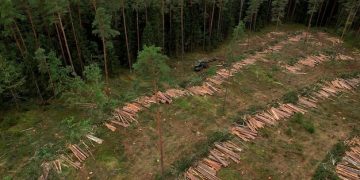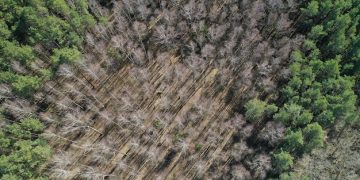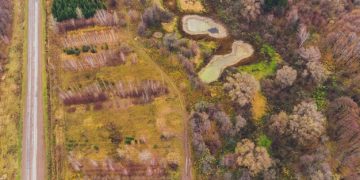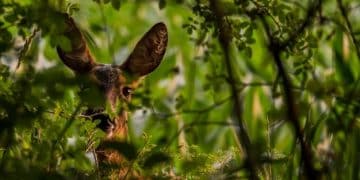Wildlife Conservation: Protecting Habitats on Private Lands
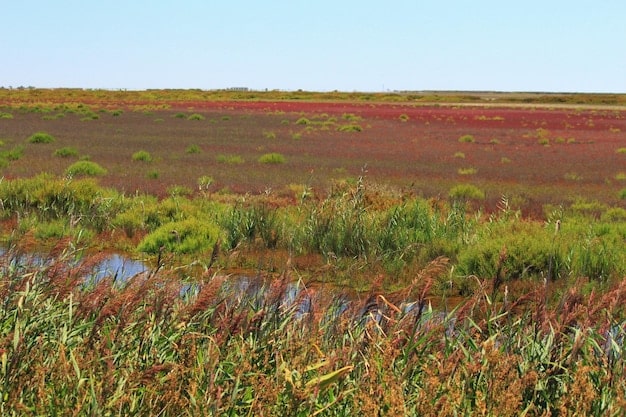
Wildlife Conservation: 3 Proven Strategies to Protect Endangered Species Habitats on Private Lands focuses on empowering private landowners with effective methods like conservation easements, habitat management, and financial incentives to protect biodiversity and ecological integrity.
The **Wildlife Conservation: 3 Proven Strategies to Protect Endangered Species Habitats on Private Lands** is crucial for safeguarding biodiversity. Private landowners play a vital role in this effort, managing vast tracts of land that often serve as critical habitats for endangered species. By implementing effective conservation strategies, these landowners can contribute significantly to the long-term survival of numerous plant and animal species.
Understanding the Importance of Wildlife Conservation on Private Lands
Private lands constitute a substantial portion of the landscape in the United States, and these areas often encompass vital habitats for a wide array of species, including those that are endangered. Effective wildlife conservation on these lands is not just beneficial for the environment; it is essential for maintaining biodiversity and ecological balance. Landowners have a unique opportunity to make a significant impact through responsible stewardship.
The role of private landowners in conservation cannot be overstated. Many endangered species depend on private lands for their survival, whether it be for breeding, foraging, or migration. By actively managing their land with conservation in mind, landowners can create and maintain habitats that support these species, contributing to their recovery and preventing further decline.
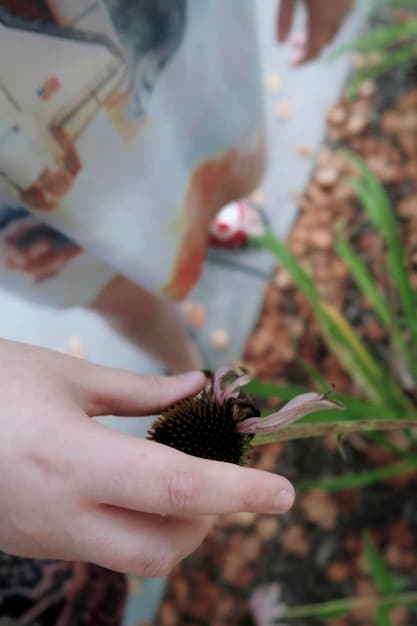
The Ecological Significance of Private Lands
Private lands frequently bridge gaps between protected areas, acting as corridors that allow wildlife to move freely and maintain genetic diversity. These corridors are particularly important in fragmented landscapes, where development and other human activities have broken up natural habitats. Without these corridors, populations can become isolated and vulnerable to extinction.
Implementing conservation practices on private lands can also enhance ecosystem services, such as clean water, carbon sequestration, and pollination. These services benefit not only wildlife but also the landowners themselves and the broader community. Conservation efforts can improve soil health, reduce erosion, and increase the resilience of the land to climate change.
Economic Benefits of Wildlife Conservation
Investing in wildlife conservation on private lands is not only ecologically sound but also economically viable. Many conservation practices can enhance the value of the land and generate income through activities such as ecotourism, hunting, and fishing. Landowners who prioritize conservation may also be eligible for financial incentives and technical assistance from government agencies and conservation organizations.
Moreover, conserving wildlife can protect landowners from potential liabilities associated with endangered species. By proactively managing their land to benefit these species, landowners can avoid conflicts with regulations and ensure that their activities are in harmony with conservation goals. This proactive approach can lead to more sustainable and profitable land management in the long run.
In conclusion, understanding the importance of wildlife conservation on private lands is the first step toward creating a more sustainable future. Landowners who embrace conservation practices can contribute significantly to the protection of endangered species and the preservation of our natural heritage.
Strategy 1: Implementing Conservation Easements
Conservation easements are one of the most effective tools for **wildlife conservation: 3 proven strategies to protect endangered species habitats on private lands**. These legal agreements restrict the type and amount of development that can occur on a property, ensuring that its natural values are protected in perpetuity. They are voluntary agreements between landowners and qualified conservation organizations or government agencies.
Conservation easements offer a flexible way for landowners to conserve their land while retaining ownership. Landowners can continue to use their land for activities such as farming, ranching, and recreation, as long as these activities are consistent with the terms of the easement. The easement is tailored to the specific characteristics of the property and the landowner’s conservation goals.
The Mechanics of Conservation Easements
A conservation easement typically involves a donation of development rights by the landowner to a conservation organization. This donation may qualify as a charitable contribution for federal income tax purposes. The value of the donation is determined by an appraisal that compares the land’s value before and after the easement is put in place.
The conservation organization is responsible for monitoring the property to ensure that the terms of the easement are being followed. This monitoring typically involves annual site visits and communication with the landowner. If a violation of the easement occurs, the conservation organization has the legal authority to enforce the terms of the agreement.
Benefits for Landowners and Wildlife
Conservation easements provide several benefits for landowners. In addition to potential tax benefits, they offer peace of mind knowing that the land will be protected for future generations. Easements can also reduce estate taxes, making it easier to pass the land on to heirs. Furthermore, they allow landowners to continue living on and using their land while contributing to conservation.
For wildlife, conservation easements ensure that critical habitats remain intact and undisturbed. By limiting development, easements protect foraging areas, breeding grounds, and migration corridors. They also help to maintain water quality and prevent soil erosion, which are essential for healthy ecosystems.
Examples of Successful Easement Programs
Several organizations and agencies offer assistance with conservation easements. The Nature Conservancy, for example, works with landowners across the United States to establish easements that protect biodiversity. The U.S. Department of Agriculture’s Natural Resources Conservation Service (NRCS) also provides funding and technical assistance for conservation easements through its Agricultural Conservation Easement Program (ACEP).
- **The Nature Conservancy:** Offers expertise and resources for establishing conservation easements.
- **NRCS Agricultural Conservation Easement Program (ACEP):** Provides financial and technical assistance for agricultural easements.
- **Local Land Trusts:** Many local land trusts work with landowners to create easements tailored to specific regional conservation needs.
In summary, conservation easements are a powerful tool for protecting endangered species habitats on private lands. They offer landowners a flexible and financially attractive way to conserve their land while contributing to the long-term health of the environment.
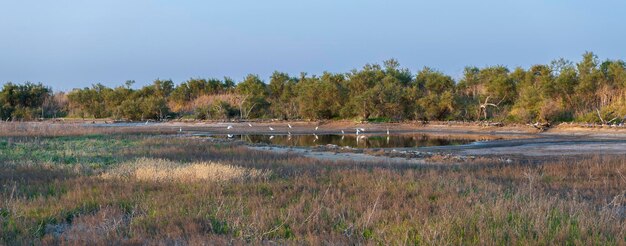
Strategy 2: Implementing Effective Habitat Management Practices
Effective habitat management is another crucial strategy for **wildlife conservation: 3 proven strategies to protect endangered species habitats on private lands**. This involves actively managing land to create and maintain habitats that support the specific needs of endangered species. Habitat management practices can include restoring wetlands, planting native vegetation, controlling invasive species, and implementing sustainable grazing practices.
Habitat management is not a one-size-fits-all approach. The most effective practices will depend on the specific characteristics of the land, the needs of the target species, and the landowner’s goals. It often requires a combination of scientific knowledge, practical experience, and adaptive management to achieve the desired results.
Restoring and Enhancing Wetlands
Wetlands are among the most productive and valuable ecosystems on Earth, providing habitat for a wide range of species, including many that are endangered. Restoring and enhancing wetlands on private lands can significantly benefit wildlife by providing critical breeding, foraging, and wintering grounds.
Wetland restoration can involve a variety of techniques, such as removing drainage systems, re-establishing native vegetation, and creating open water areas. It is important to consider the hydrology of the area and the needs of the target species when planning a wetland restoration project.
Planting Native Vegetation
Native plants are essential for healthy ecosystems, providing food and shelter for wildlife and supporting pollinators. Planting native vegetation on private lands can enhance habitat quality and increase biodiversity. It is important to choose plants that are appropriate for the local climate and soil conditions and that provide specific benefits for the target species.
Native plant restoration can involve a variety of techniques, such as seed broadcasting, planting seedlings, and controlling invasive species. It is often beneficial to create a diverse mix of native plants to provide a variety of food sources and habitat structures for wildlife.
Controlling Invasive Species
Invasive species are a major threat to biodiversity, outcompeting native plants and animals and disrupting ecosystem processes. Controlling invasive species is an essential component of habitat management. This can involve a variety of techniques, such as manual removal, herbicide application, and biological control.
It is important to identify and prioritize invasive species based on their impact on the ecosystem and the feasibility of control. A long-term, adaptive management approach is often necessary to effectively control invasive species and prevent their re-establishment.
Sustainable Grazing Practices
Sustainable grazing practices can enhance habitat quality by promoting plant diversity, preventing soil erosion, and maintaining open landscapes. These practices involve managing livestock grazing to ensure that it is compatible with wildlife conservation goals.
Careful monitoring of grazing intensity and timing is essential to prevent overgrazing and ensure that plants have sufficient time to recover. Strategies such as rotational grazing, deferred grazing, and prescribed burning can be used to maintain healthy rangelands and benefit wildlife.
In conclusion, implementing effective habitat management practices is essential for protecting endangered species habitats on private lands. By actively managing their land to create and maintain high-quality habitats, landowners can contribute significantly to the conservation of biodiversity.
## Strategy 3: Utilizing Financial Incentive Programs
Financial incentive programs are a valuable tool for encouraging private landowners to participate in **wildlife conservation: 3 proven strategies to protect endangered species habitats on private lands**. These programs provide funding and technical assistance to landowners who implement conservation practices on their property. They can help offset the costs of implementing these practices and make conservation more economically viable.
Financial incentive programs are offered by a variety of government agencies, conservation organizations, and private foundations. They often target specific conservation goals, such as wetland restoration, grassland management, and endangered species recovery.
### NRCS Environmental Quality Incentives Program (EQIP)
The Environmental Quality Incentives Program (EQIP) is a voluntary program offered by the NRCS that provides financial and technical assistance to agricultural producers. EQIP helps landowners implement conservation practices that improve soil, water, air, and wildlife habitat.
EQIP offers cost-share payments for a wide range of conservation practices, such as cover cropping, nutrient management, and erosion control. It also provides technical assistance to help landowners develop and implement conservation plans.
### U.S. Fish and Wildlife Service Partners Program
The U.S. Fish and Wildlife Service’s Partners for Fish and Wildlife Program provides technical and financial assistance to private landowners who want to improve habitat for fish and wildlife. The program focuses on restoring and enhancing degraded habitats, such as wetlands, grasslands, and forests.
The Partners Program works with landowners to develop and implement habitat restoration projects that benefit both wildlife and the landowner. It provides cost-share payments for project implementation and technical assistance to ensure that projects are successful.
### State Wildlife Grant Programs
Many states offer wildlife grant programs that provide funding for conservation projects on private lands. These programs are typically administered by state wildlife agencies and target specific conservation priorities within the state.
State wildlife grant programs can provide funding for a wide range of projects, such as habitat restoration, invasive species control, and wildlife monitoring. They often prioritize projects that benefit endangered species and other at-risk wildlife populations.
- **Environmental Quality Incentives Program (EQIP):** Offers financial and technical assistance to agricultural producers for various conservation practices.
- **Partners for Fish and Wildlife Program:** Provides assistance for landowners to improve habitat for fish and wildlife.
- **State Wildlife Grant Programs:** State-administered programs that fund conservation projects on private lands.
By utilizing financial incentive programs, landowners can make conservation more economically viable and contribute to the long-term health of the environment. These programs provide valuable resources and support for landowners who are committed to protecting endangered species habitats.
## Overcoming Challenges in Wildlife Conservation on Private Lands
While the strategies mentioned—implementing conservation easements, using habitat management practices, and utilizing financial incentives—are effective, implementing them is not without challenges. Addressing these hurdles is crucial for advancing **wildlife conservation: 3 proven strategies to protect endangered species habitats on private lands**.
One common challenge is the lack of awareness and understanding among private landowners regarding the importance of wildlife conservation. Another challenge is the cost associated with implementing conservation practices. Competing land use priorities, such as agriculture and development, can also pose significant obstacles.
### Increasing Landowner Awareness and Education
Effective outreach and education programs are essential for increasing landowner awareness of the benefits of wildlife conservation. These programs can provide landowners with information about the ecological significance of their land, the threats facing endangered species, and the conservation practices they can implement to improve habitat quality.
Outreach programs can include workshops, field days, and one-on-one consultations. It is important to tailor these programs to the specific needs and interests of the target audience. Showcasing successful conservation projects and highlighting the economic benefits of conservation can be particularly effective in motivating landowners to take action.
### Addressing Financial Constraints
Financial constraints can prevent landowners from implementing conservation practices, even if they are aware of the benefits. Financial incentive programs can help to address this challenge by providing funding for project implementation.
In addition to government programs, private foundations and conservation organizations can also provide financial assistance. Exploring alternative funding sources, such as carbon sequestration credits and ecosystem service payments, can also help to make conservation more economically viable.
### Balancing Competing Land Use Priorities
Balancing competing land use priorities requires a collaborative and adaptive management approach. It is important to engage all stakeholders, including landowners, government agencies, and conservation organizations, in the planning process.
Developing integrated land management plans that consider both conservation and economic goals can help to reduce conflicts and ensure that land is managed sustainably. Promoting sustainable agriculture and responsible development practices can also help to minimize the impacts of human activities on wildlife habitat.
In summary, overcoming the challenges in wildlife conservation on private lands requires a multifaceted approach that includes increasing landowner awareness, addressing financial constraints, and balancing competing land use priorities. By working together, landowners, government agencies, and conservation organizations can achieve significant progress in protecting endangered species habitats.
## The Future of Wildlife Conservation: Innovation and Collaboration
The future of **wildlife conservation: 3 proven strategies to protect endangered species habitats on private lands** relies on continuous innovation and enhanced collaboration. As the human population grows and climate changes impact habitats, new approaches must be developed to protect endangered species and maintain biodiversity.
Technological advancements, such as remote sensing and data analytics, can provide valuable tools for monitoring wildlife populations and assessing habitat quality. Collaborative partnerships between landowners, scientists, and conservation organizations can facilitate the implementation of innovative conservation strategies.
### Leveraging Technology for Conservation
Technology can play a crucial role in enhancing wildlife conservation efforts. Remote sensing technologies, such as drones and satellites, can be used to monitor habitat changes and track wildlife movements. Data analytics can help to identify critical habitats, assess the effectiveness of conservation practices, and predict the impacts of climate change.
Using technology can also improve communication and collaboration among stakeholders. Online platforms and mobile apps can facilitate the sharing of information and best practices, enabling landowners to learn from each other and coordinate conservation efforts.
### Fostering Collaborative Partnerships
Collaborative partnerships are essential for achieving long-term conservation success. These partnerships can bring together diverse expertise and resources, enabling stakeholders to address complex conservation challenges more effectively.
Partnerships can involve government agencies, conservation organizations, universities, and private landowners. It is important to establish clear goals, roles, and responsibilities within the partnership and to foster a culture of trust and mutual respect.
### Adaptive Management and Continuous Improvement
Adaptive management is a key principle for ensuring the effectiveness of conservation efforts. This involves continuously monitoring the outcomes of conservation practices, evaluating their effectiveness, and adjusting management strategies based on the results.
Adaptive management requires a commitment to learning and innovation. It also requires a willingness to experiment with new approaches and to adapt to changing environmental conditions.
In conclusion, the future of wildlife conservation depends on innovation and collaboration. By leveraging technology, fostering collaborative partnerships, and embracing adaptive management, we can protect endangered species habitats and ensure a sustainable future for wildlife.
| Key Point | Brief Description |
|---|---|
| 🤝 Conservation Easements | Legal agreements to restrict development and protect natural values. |
| 🌱 Habitat Management | Active management to create and maintain habitats for endangered species. |
| 💰 Financial Incentives | Programs that provide funding and assistance for conservation practices. |
| 🤝 Collaboration | Partnerships between landowners, agencies, and organizations for effective conservation. |
Frequently Asked Questions
▼
A conservation easement is a voluntary legal agreement that limits development on a property to protect its natural resources. It’s a partnership between you and a conservation organization.
▼
Habitat management includes restoring wetlands, planting native vegetation, and controlling invasive species. Consult with specialists for tailored advice to enhance biodiversity.
▼
Programs like EQIP and state wildlife grants provide funding and technical assistance for conservation practices. Explore opportunities to offset conservation costs and support habitat preservation.
▼
Integrated land management plans balance conservation and economic goals through collaboration with stakeholders. Utilize sustainable practices and participate in community programs.
▼
Remote sensing and data analytics can monitor wildlife populations and assess habitat quality. Use online platforms for communication and collaboration among stakeholders to improve outcomes.
Conclusion
In conclusion, **Wildlife Conservation: 3 Proven Strategies to Protect Endangered Species Habitats on Private Lands** is a critical endeavor. Conservation easements, habitat management and financial incentive programs are key to empowering landowners, protecting endangered species and preserving biodiversity.
